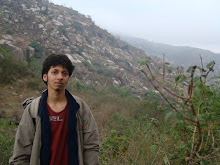
The economic policies of our country can be placed under two major categories, the pre-Manmohan Singh era and the post-Manmohan Singh era. Amidst the haze of India’s economic growth and its strong influence over the world economy, we seem to have forgotten the silent, humble and the highly educated economist who laid the foundations for India’s economic growth.
The Pre-Manmohan Singh Era:
During the initial years of independent India, the economic policies were framed mainly based on the Soviet Union’s economic structure. The five year plans were framed on similar lines. The colonial exploitation of the resources and wealth from this country had a great influence in provoking the policy makers to follow the lines of Socialism and protectionism. Most of the key industrial sectors such as Automobiles, Mining, Telecom, Power, and Manufacturing were nationalized in an attempt to make Indian economy self-sustainable and minimise the influence from other world economies. Regulations and rules for obtaining licences for the industrial sectors were very stringent and they were controlled indirectly by the central government through the state governments. There have been cases where the manufacturers had to obtain permissions from about 70 agencies and yet the state govt. would decide the source of capital and control the process. The era has also witnessed a record taxation of 97.5% on the industries during 1970s.
There is no doubt that our grievances against the British Empire had a sound basis. As the painstaking statistical work of the Cambridge historian Angus Maddison has shown, India's share of world income collapsed from 22.6% in 1700, almost equal to Europe's share of 23.3% at that time, to as low as 3.8% in 1952. Indeed, at the beginning of the 20th Century, "the brightest jewel in the British Crown" was the poorest country in the world in terms of per capita income.
–Manmohan Singh
The Crisis:
The stringent reforms and the stubbornness to keep the industrial sectors under the control of the central govt. took a toll on the economy. The growth rate of India’s economy had reached a low of 3.5% by the year 1991 and India was almost bankrupt by then. The bailout by the International Monetary Fund came at a price – Rupee was devalued and economic reforms were forced upon India.
The Architect:
Manmohan Singh was born to Gurmukh Singh and Amrit Kaur on 26 September 1932, in Gah, Punjab, now in Pakistan. He got his bachelor's and master's degrees in 1952 and 1954, respectively, standing first throughout his academic career. He won the Wright's Prize for distinguished performance in 1955 and 1957. In 1997, the University of Alberta awarded him an Honorary Doctor of Law degree. The University of Oxford awarded him an honorary Doctor of Civil Law degree in July 2005, and in October 2006, the University of Cambridge followed with the same honor. In 2008, he was awarded honorary Doctor of Letters degree by Benaras Hindu University and later that awarded honorary doctorate degree by King Saud University.
The Post-Manmohan Singh era:
P.V. Narasimha Rao was the prime minister in the year 1991 when India was facing one of the worst economic crises. The entire policy structure had to be changed and the pressure from IMF to remove ‘Licence Raj’ was adding to it. This was the time when then the expertise and the experience of Dr. Manmohan Singh was sought and he was made the finance minister. His challenge was not only to get the country out of the crises, but also lay the foundation for liberal economic reforms in the country.
When he approached P.V. Narasimha Rao with the liberalization policies, he was patted at his back and given the freedom to implement his ideas. This was a significant point in history as the forty year old custom of protectionism was suddenly overturned and the gates of the Indian economy opened to the world. One of the key steps he took was to move most of the industrial sectors from public to private sector.
When the historic budget of 1994-95 was presented in the parliament by Manmohan Singh, the world turned its eyes towards India. The taxation was reduced, foreign investments were encouraged and the privatization of the industries was suggested in the budget. This phase of economic reforms is referred to as the ‘Economic liberalization’.
Since then it’s been a success story. Today we are the 10th largest economy in the world in terms of nominal GDP and 4th largest in terms of purchasing power parity. We have continued to grow and change the economic equations over the years.
Manmohan Singh may not boast about his work during the political campaigns or interviews, but the fact remains that he is the architect who laid the foundation for building this country. Until we have such fine men leading from the front for this country, we can be assured that our economy is in safe hands.

These plants are established by us on the turnkey basis using advanced technological standards.
ReplyDeleteManufacturer Of Tyre Pyrolysis Plants